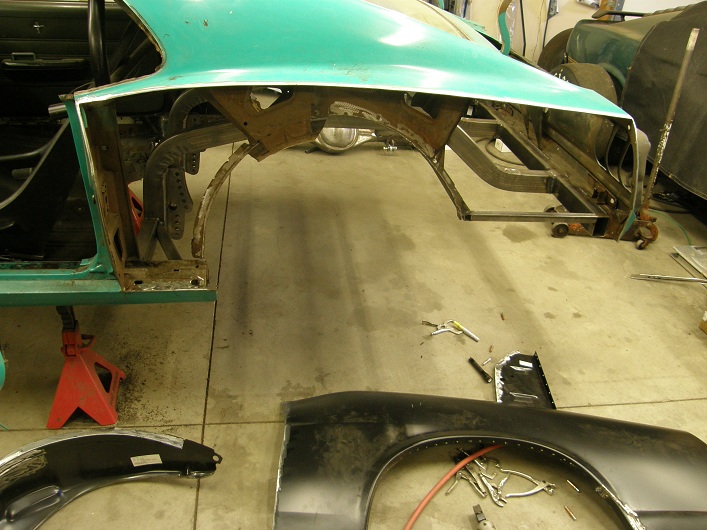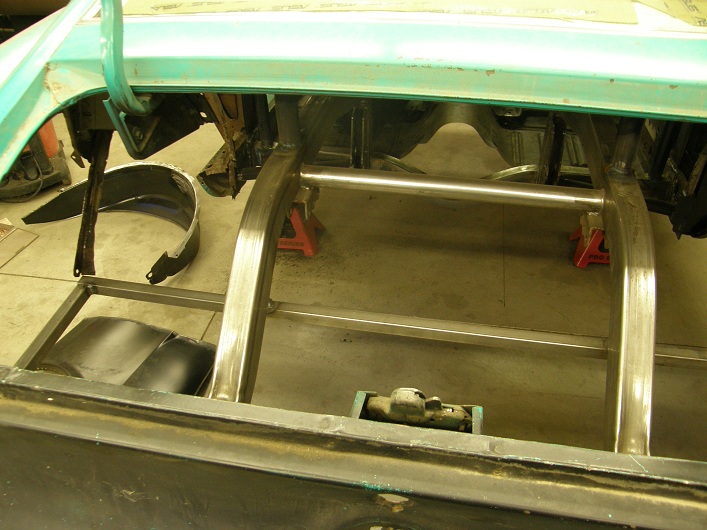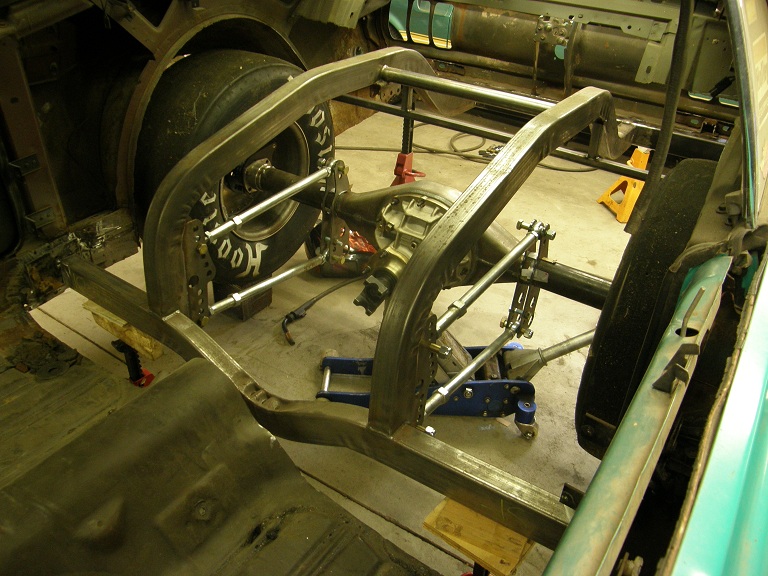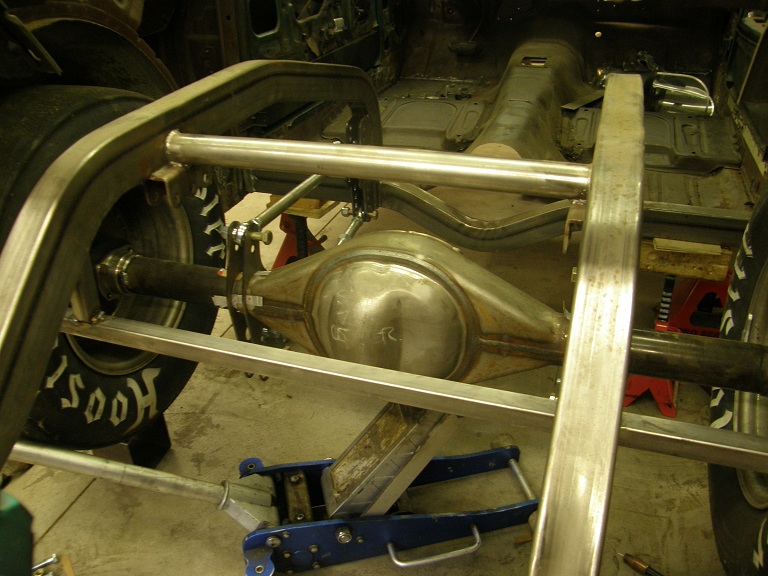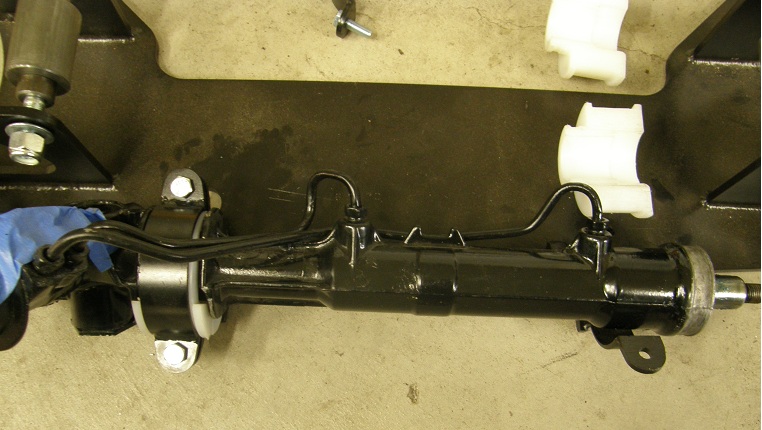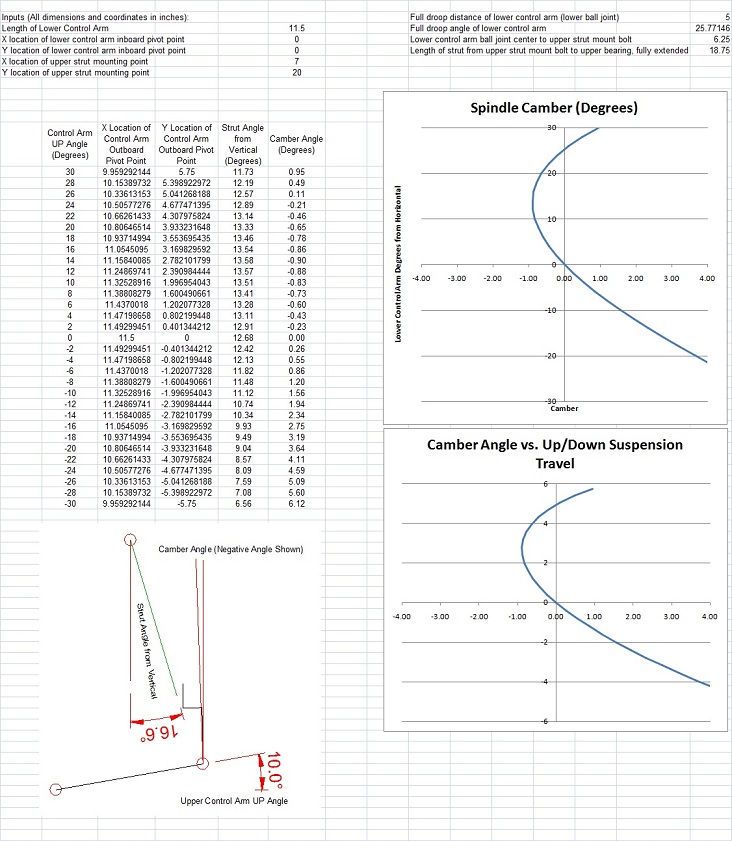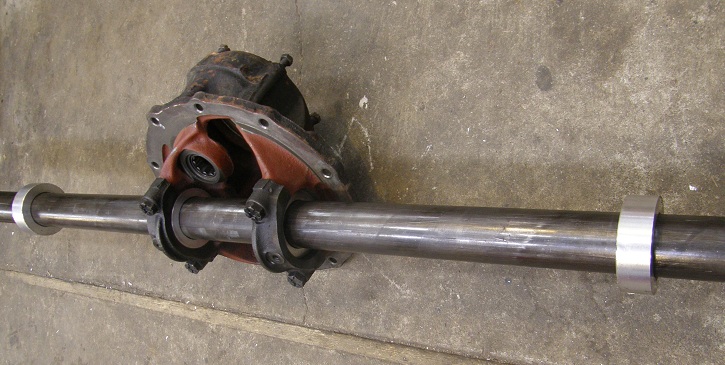361
The Road to Drag Week 2011 / January 9, 2011 - The Road to Drag Week 2011
« on: March 18, 2011, 07:43:23 PM »
Monday this week on my lunch break I put in a call to Fatman Fabrications to ask about the issue with how the front struts I purchased fit on the spindles. Basically they told me that the kit was designed to be used with stock components, and that aftermarket components may not work properly with the kit. They singled out the Strange Engineering struts I had as a potential problem. This really didn't make any sense to me; if the original '79-'93 Mustang spindles had wider ears than the '94-'04 spindles, how could Strange offer a strut that fit a narrower set of ears? I suspected that maybe there had been a change to Mustang spindles somewhere in the mid 1980s that the guys at Fatman didn't know about, because my Strange struts were not specified for '79-'93 Mustangs, only from '87-'93. Unfortunately I was stuck with them, because they'd had to be modified slightly in order to fit the lower spring mount that came with the Fatman kit over the strut tube. I resigned myself to the fact that I had wasted my money on these struts. I didn't want to buy stock Ford struts for this car, because I wanted a 90/10 style strut for a drag race oriented suspension. On Monday night I went looking through the Summit web site, and found some Lakewood 90/10 struts for '79-'93 Mustangs. I went ahead and ordered these, figuring I could return them if they also had the mounting bracket for the narrower ears on the spindle.
Late in the evenings this week I continued to read up on web sites, so not a lot got done on the car project. Thursday my new Lakewood struts showed up from Summit, so I anxiously took them out of the box on Thursday night to see what they looked like. Sure enough, they came with the wider spacing between the brackets, so they would work as I wanted them to in my application. However, they also came with their own set of spacer plates, so that they would bolt onto the narrower ears of my spindle if the plates were used. Since these struts were specified for '79-'93 cars, I am now fairly certain that a change to the mounting ears on the spindles was made by Ford in 1987, making the ears narrower and causing my problem with the '87-'93 Strange struts.
Friday night around 9:00 I got back out to the shop to get going on the car project again. I started out making the adapter plates I needed to allow tilting the strut outboard from the original shock tower locations. Steve and Jerry were going to come over on Saturday night for another barn night, and I wanted to be able to put the whole front end together when they were here, so I needed to get these plates done. Here's a picture of one of the struts with the pair of plates installed:
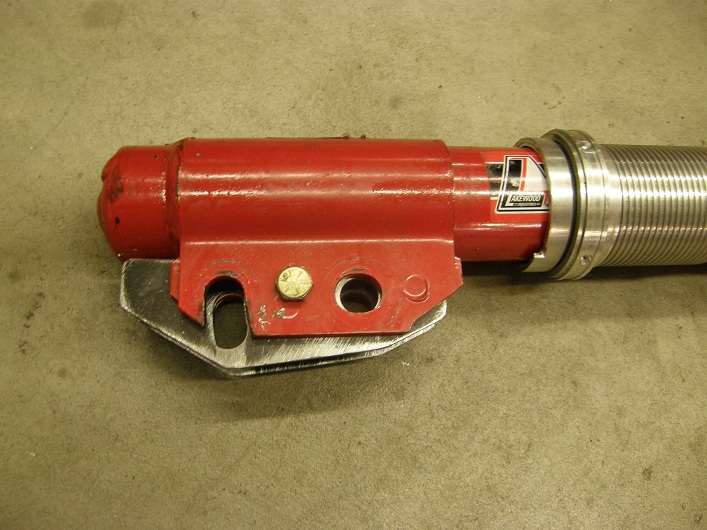
I got one pair done on Friday night, and the other pair done on Saturday morning, and spent the rest of the day on Saturday afternoon finishing up the welding on the quarter panels, trunk drop downs, and outer wheelhouses on the passenger side of the car. I knew that if I didn't have that done by the time Steve and Jerry came over, they would be merciless in their verbal abuse of me.
When Steve and Jerry came over, I had finished the quarter panel and had started working on a patch panel that would go between the original stock floor of the car and the back half crossmember. I managed to finish fitting it up just after they arrived, so Jerry grabbed the wire feed and began welding it in place. Steve took over the TIG welder to finish some TIG welding that needed to be done on the front frame support bars and the back half area, while I started working on getting the struts installed with the spacer plates I had built earlier. Steve finished up with the TIG welding fairly quickly, and started trimming around the front area of the car, where we had used the plasma cutter to cut away the shock towers and inner fenders. He used a cutoff wheel to make those cuts nice and clean, and then built a T-shaped 1/8" steel plate to cap the shock tower area where we had cut it off with the plasma cutter. Meanwhile I had figured out how I wanted to mount the upper struts to the front frame support bars, and had used a combination of the brackets in the Fatman kit and my own custom brackets to get the upper struts positioned properly. Jerry finally finished up with the sheet metal welding on the floor (which was a lot of welding), and came up and tacked the upper strut mounts in place.
At the end of the night we slid the Wilwood brake hubs onto the front hubs, re-installed the four link, rear axle housing, and rear wheels and tires, and also bolted the front tires on the car. Finally, I took the car down off the jack stands and supported it at ride height so we could see how it all looked. Here's some pictures, starting with the sheet metal patch at the back of the floor:
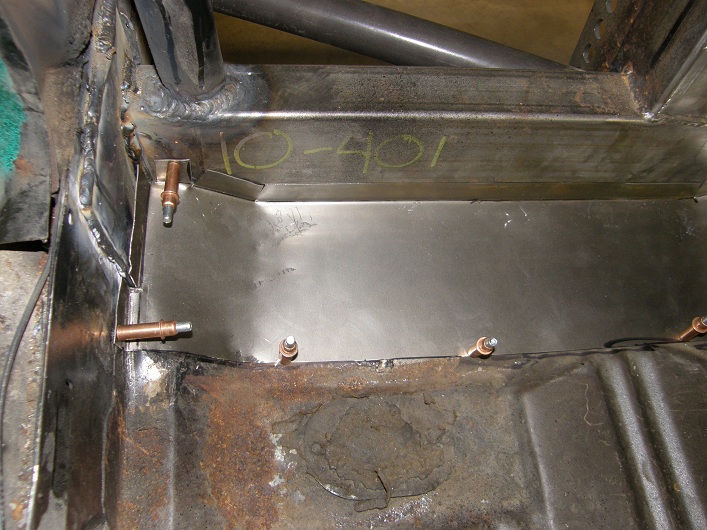
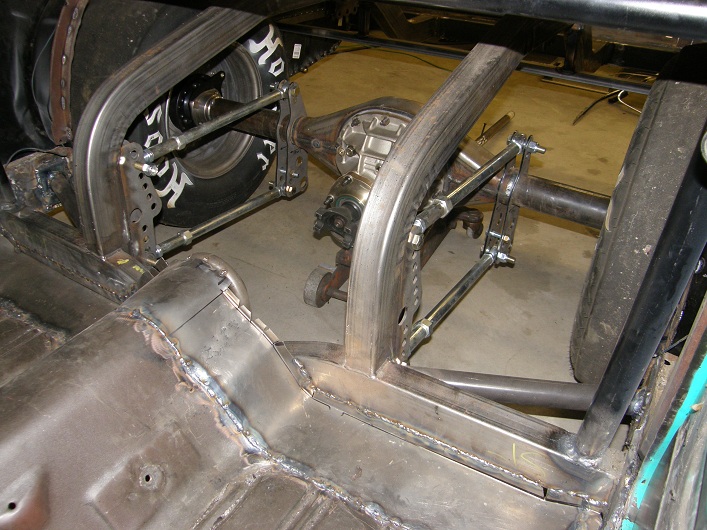

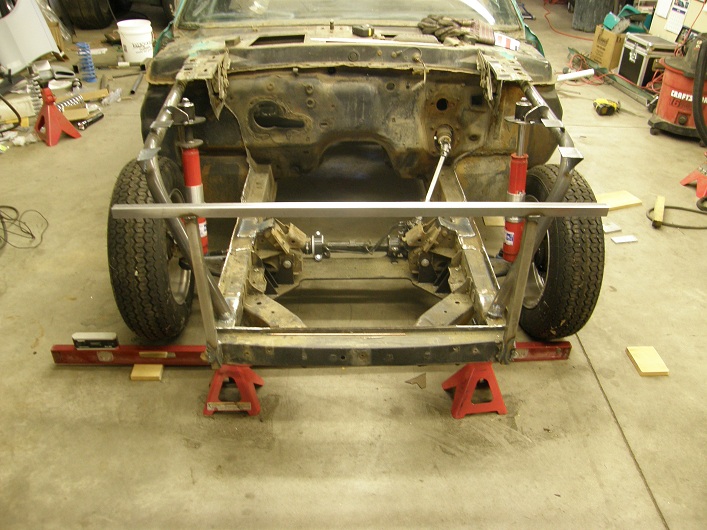
Everything was starting to look pretty good! Jerry and Steve took off, and I had the afternoon on Sunday available, so I fell asleep thinking about what else I could do to the car on Sunday afternoon.
Sunday afternoon I was back out to the shop. I had decided that I wanted to put the front end fiberglass on the car to see how it looked. The Branda fiberglass had been leaning against the garage door for over a month, so I was anxious to see how it looked when installed.
As usual, the fiberglass parts presented some fitment issues. Wrestling the front fenders into place so that they would actually bolt up to the mounting points towards the back of the fender was rather challenging, but with a certain amount of convincing they eventually went into place. Getting both fenders installed and looking about right took a couple of hours. Next I started looking at installing the headlight buckets and the front fender trim, and it was clear that some trimming of the fiberglass pieces would be required. I got the passenter side parts installed, and then for fun I laid the hood in place on the car, and took this picture:

I was standing around enjoying how the car looked like this, when I noticed something rather disturbing. The front wheels were moved way, way inside the fenders! Standing back a little and looking at the wheel and tire position, the car looked like an old funny car, which was definitely NOT the look I was going for. I measured the distance from the fat part of the tire to the outer fender, and it was four inches! Here's a couple of photos:
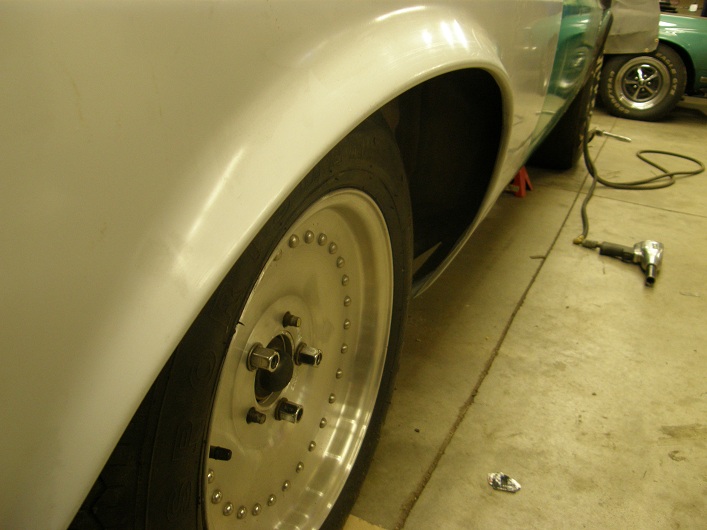
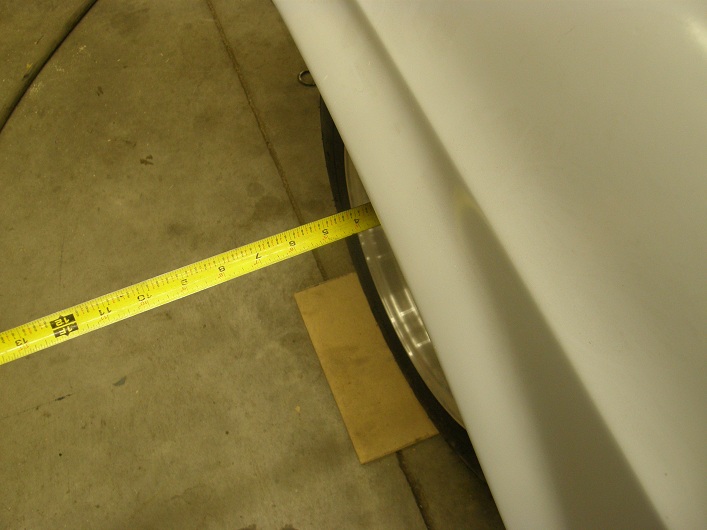
I wondered if this was a wheel offset issue or a front suspension track width issue. Given all the issues I'd had with the Fatman kit, I was afraid I knew the answer. The car looked like crap with the wheel in this position, and I resigned myself to investigate this issue in the coming week. I left the shop tonight pretty disappointed; we will see what the next week brings.
Late in the evenings this week I continued to read up on web sites, so not a lot got done on the car project. Thursday my new Lakewood struts showed up from Summit, so I anxiously took them out of the box on Thursday night to see what they looked like. Sure enough, they came with the wider spacing between the brackets, so they would work as I wanted them to in my application. However, they also came with their own set of spacer plates, so that they would bolt onto the narrower ears of my spindle if the plates were used. Since these struts were specified for '79-'93 cars, I am now fairly certain that a change to the mounting ears on the spindles was made by Ford in 1987, making the ears narrower and causing my problem with the '87-'93 Strange struts.
Friday night around 9:00 I got back out to the shop to get going on the car project again. I started out making the adapter plates I needed to allow tilting the strut outboard from the original shock tower locations. Steve and Jerry were going to come over on Saturday night for another barn night, and I wanted to be able to put the whole front end together when they were here, so I needed to get these plates done. Here's a picture of one of the struts with the pair of plates installed:

I got one pair done on Friday night, and the other pair done on Saturday morning, and spent the rest of the day on Saturday afternoon finishing up the welding on the quarter panels, trunk drop downs, and outer wheelhouses on the passenger side of the car. I knew that if I didn't have that done by the time Steve and Jerry came over, they would be merciless in their verbal abuse of me.
When Steve and Jerry came over, I had finished the quarter panel and had started working on a patch panel that would go between the original stock floor of the car and the back half crossmember. I managed to finish fitting it up just after they arrived, so Jerry grabbed the wire feed and began welding it in place. Steve took over the TIG welder to finish some TIG welding that needed to be done on the front frame support bars and the back half area, while I started working on getting the struts installed with the spacer plates I had built earlier. Steve finished up with the TIG welding fairly quickly, and started trimming around the front area of the car, where we had used the plasma cutter to cut away the shock towers and inner fenders. He used a cutoff wheel to make those cuts nice and clean, and then built a T-shaped 1/8" steel plate to cap the shock tower area where we had cut it off with the plasma cutter. Meanwhile I had figured out how I wanted to mount the upper struts to the front frame support bars, and had used a combination of the brackets in the Fatman kit and my own custom brackets to get the upper struts positioned properly. Jerry finally finished up with the sheet metal welding on the floor (which was a lot of welding), and came up and tacked the upper strut mounts in place.
At the end of the night we slid the Wilwood brake hubs onto the front hubs, re-installed the four link, rear axle housing, and rear wheels and tires, and also bolted the front tires on the car. Finally, I took the car down off the jack stands and supported it at ride height so we could see how it all looked. Here's some pictures, starting with the sheet metal patch at the back of the floor:




Everything was starting to look pretty good! Jerry and Steve took off, and I had the afternoon on Sunday available, so I fell asleep thinking about what else I could do to the car on Sunday afternoon.
Sunday afternoon I was back out to the shop. I had decided that I wanted to put the front end fiberglass on the car to see how it looked. The Branda fiberglass had been leaning against the garage door for over a month, so I was anxious to see how it looked when installed.
As usual, the fiberglass parts presented some fitment issues. Wrestling the front fenders into place so that they would actually bolt up to the mounting points towards the back of the fender was rather challenging, but with a certain amount of convincing they eventually went into place. Getting both fenders installed and looking about right took a couple of hours. Next I started looking at installing the headlight buckets and the front fender trim, and it was clear that some trimming of the fiberglass pieces would be required. I got the passenter side parts installed, and then for fun I laid the hood in place on the car, and took this picture:

I was standing around enjoying how the car looked like this, when I noticed something rather disturbing. The front wheels were moved way, way inside the fenders! Standing back a little and looking at the wheel and tire position, the car looked like an old funny car, which was definitely NOT the look I was going for. I measured the distance from the fat part of the tire to the outer fender, and it was four inches! Here's a couple of photos:


I wondered if this was a wheel offset issue or a front suspension track width issue. Given all the issues I'd had with the Fatman kit, I was afraid I knew the answer. The car looked like crap with the wheel in this position, and I resigned myself to investigate this issue in the coming week. I left the shop tonight pretty disappointed; we will see what the next week brings.


